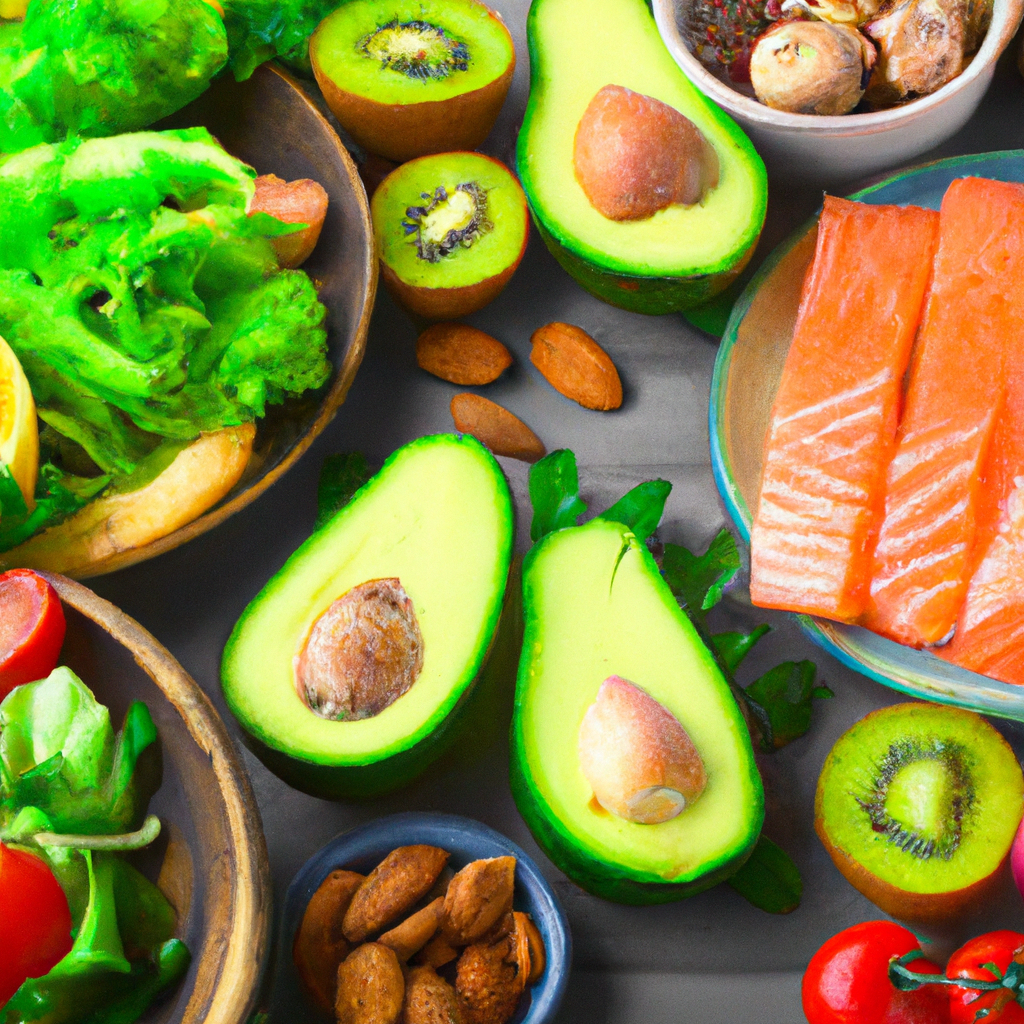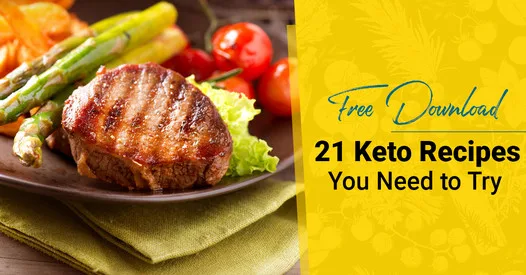In navigating your journey towards better health, it’s important to understand what you’re getting into. Two of the most popular diet strategies being followed today are the Paleo diet and the Keto diet. Each of these powerhouse diets has a unique approach to taking control of your health through food. Pitting Paleo diet vs Keto diet allows you to grasp the core principles, the benefits, and the challenges of each, ultimately helping you to decide which one aligns best with your personal nutritional needs and lifestyle. Pull up a chair and let’s get into it!
Understanding the Basics: Paleo and Keto Diets
When you’re looking into new ways to eat healthier, you might come across the Paleo and Keto diets. Both of these diets are popular choices for those aiming to lose weight, increase energy, and improve their overall health. However, each diet has its distinct characteristics and principles.
Definition of a Paleo diet
The Paleo diet, also known as caveman or stone-age diet, is a nutritional plan based on ancient human eating habits. It involves eating whole, unprocessed foods that hunter-gatherer ancestors would have eaten thousands of years ago. These include lean meats, fish, fruits, vegetables, nuts, and seeds.
Definition of a Keto diet
On the other hand, the Keto or ketogenic diet is a low-carbohydrate, high-fat eating plan. It pushes your body into a metabolic state of ketosis, where it burns fat rather than glucose for energy. The diet encourages consuming foods like meat, fish, eggs, cheese, butter, oils, and non-starchy vegetables while minimizing carbohydrates.
Historical Context and Background
Understanding the origins of these diets is essential for fully grasping their principles and effectiveness.
Origins of the Paleo diet
The Paleo diet, inspired by our prehistoric ancestors’ diet, was brought to mainstream attention in the 1970s by a gastroenterologist named Walter Voegtlin. His theory was that modern diseases like obesity, heart disease, and diabetes are a result of the mismatch between our bodies and our current diet.
Origins of the Keto diet
The Keto diet’s origins are quite different. It started in the 1920s as a treatment for epilepsy in children where conventional medication had failed. By reducing glucose levels and increasing ketone bodies in the bloodstream, the diet helped to reduce seizures. It wasn’t until recently that the diet gained widespread popularity for weight loss and other health benefits.

Underlying Principles of Paleo and Keto Diets
These diets are more than just a list of foods to eat and avoid. They have underlying principles that set them apart from others.
Key principles of Paleo diet
The Paleo diet promotes consuming nutrient-dense, whole foods and eliminating processed, nutrient-poor foods. It’s not merely about emulating prehistoric eating habits but about adopting a healthier lifestyle that includes regular physical activity.
Key principles of Keto diet
The main principle of the Keto diet is achieving and maintaining a metabolic state of ketosis. This is done by drastically limiting carbohydrate intake and increasing fat consumption, which forces your body to burn fat, rather than carbohydrates, for fuel.
Food Choices and Restrictions
Each diet has distinct limitations and allowances when it comes to food choices.
Food allowed in Paleo diet
In a Paleo diet, you’re encouraged to consume lean meats, fish, fruits, vegetables, nuts, and seeds – essentially, anything our ancestors could hunt and gather.
Food restricted in Paleo diet
Foods off the table when going Paleo are, broadly speaking, the ones that came into existence with farming and industrialization. These include dairy products, legumes, grains, artificial sweeteners, and any form of processed foods.
Food allowed in Keto diet
In a Keto diet, you’ll find plenty of meats, fatty fish, full-fat dairy, eggs, non-starchy vegetables, healthy oils, avocados, and nuts and seeds.
Food restricted in Keto diet
The Keto diet requires you to avoid foods high in carbs. This means you’ll have to limit your intake of sugary foods, grains, starchy vegetables, most fruits, and legumes.

Nutrient Composition of Each Diet
The nutrient makeup of each diet differs greatly.
Nutrient breakdown in Paleo diet
The Paleo diet doesn’t strictly outline the percentage of calories that should come from each macronutrient group. However, the focus is on whole, nutrient-dense foods with a significant intake of animal protein, fats from natural sources, and plenty of fruits and vegetables.
Nutrient breakdown in Keto diet
The Keto diet’s nutrient composition is well defined, with about 70-75% of calories coming from fats, 20-25% from protein, and only 5-10% from carbohydrates.
Health Benefits
Each diet offers its own set of potential health benefits.
Health benefits of Paleo diet
The Paleo diet can lead to improvements in weight, waist circumference, blood pressure, blood sugar levels, and lipid profiles. Its emphasis on whole foods and avoidance of processed items can significantly reduce the intake of added sugars, sodium, and unhealthy fats.
Health benefits of Keto diet
The Keto diet is renowned for its potential in promoting weight loss by enhancing fat burning and reducing appetite. Moreover, it can improve blood sugar control for people with diabetes, and it might have certain neuroprotective effects.
Potential Risks and Side Effects
Like any diet, both Paleo and Keto come with potential side effects and health risks.
Common side effects of Paleo diet
Some common side effects of the Paleo diet when beginning include fatigue, headaches, and irritability, known as ‘Paleo flu.’ This is a result of your body adjusting to a drop in carbohydrates and increase in protein and fiber.
Common side effects of Keto diet
When starting the Keto diet, you may experience side effects such as nausea, fatigue, headaches, and constipation, often referred to as the ‘Keto flu.’ This is due to the drastic reduction of carbs and the body’s transition into ketosis.
Potential health risks associated with Paleo diet
As for health risks, the absence of dairy, whole grains, and legumes in the Paleo diet potentially leads to calcium and vitamin D deficiencies and a lack of dietary fiber, which is necessary for gut health.
Potential health risks associated with Keto diet
The Keto diet’s potential risks include nutrient deficiencies due to the restriction of fruit and certain vegetables, increased risk of heart disease due to high fat intake, and liver problems due to the high levels of fat metabolism.
Weight Loss and Body Composition Changes
Both diets are hailed for their weight loss and body composition benefits, though they operate quite differently.
Effectiveness of Paleo diet for weight loss
The Paleo diet may aid in weight loss because it encourages the consumption of more satisfying proteins and fats, leading to a reduction in overall calorie intake.
Effectiveness of Keto diet for weight loss
The Keto diet’s effectiveness for weight loss derives from the metabolic advantage of burning fat for fuel and decreased appetite due to the higher protein and fat intake.
Effects on body composition
Both diets, when combined with regular physical activity, can result in changes in body composition. They can decrease body fat percentage and increase muscle mass, improving overall body composition and metabolism.
Sustainability and Lifestyle Considerations
Adherence to a diet involves more than just food choices. It’s also about whether a diet fits into your lifestyle and can be sustained over time.
Feasibility of maintaining a Paleo diet long-term
The Paleo diet might be easier to adhere to, given that there’s flexibility on macronutrient distribution. It encourages a healthy lifestyle, but its restrictiveness regarding food groups might make dining out a challenge.
Feasibility of maintaining a Keto diet long-term
Maintaining a Keto diet long-term could be difficult due to its severe carb restrictions. It requires careful planning and monitoring to ensure that you’re in ketosis. However, there’s room for indulgence in fats, which some might find enjoyable.
Impact on social and recreational activities
As for recreational activities, on both diets, socializing in places where high-carb foods prevail could be tricky. You’ll need to plan ahead and confidently make choices that align with your dietary needs.
Choosing the Right Diet for You
Deciding between the Paleo and Keto diets depends on individual factors.
Factors to consider when choosing a diet
These include your health goals, potential food restrictions, ability to adhere to the plan, potential nutrient deficiencies, and any existing health conditions.
Role of personal health goals
If you aim for overall health improvement and align more with the ‘eat what our ancestors ate’ philosophy, Paleo might be best. If your main goal is weight loss or improved metabolic health, you might find more success with Keto.
Role of personal lifestyle and preferences
Consider your personal preferences and lifestyle. If you enjoy variety and don’t mind giving up grains, dairy, and legumes, Paleo could be a good fit. If you can handle a very low-carb diet and love fats, try Keto.
Advice for transitioning into Paleo or Keto diet
Start slowly, particularly when limiting macronutrient groups like carbs. Consider consulting a dietitian for individualized advice and to ensure you’re getting all the necessary nutrients.
So there you have it, your comprehensive guide to Paleo and Keto diets. They both come with advantages and drawbacks, so take your time to consider which diet is likely to work best for you. After all, the best diet isn’t the trendiest one, but the one you can stick to and makes you feel good.

